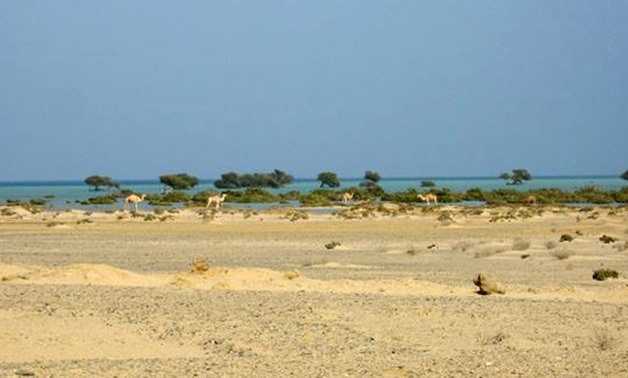
Gebel Elba National Park - Love the Red Sea facebook
CAIRO April 29 2017: Hala’ib and Shalateen , located on the Red Sea's African coast, is rich with mountains and rocks that contain scribbled and carved drawings in the form of a variety of animals as cows, buffaloes, elephants and other predatory animals.
Some experts say that drawings on those mountains belong to prehistoric times but Mohamed Abou El Wafa, director of the Red Sea Antiquities, said that the drawings refer to the Pharaonic era, not prehistoric, while some of them are attributed elsewhere in prehistory.

Abou El Wafa explained that pharaohs were importing those animals from Puntland, a region in northeastern Somalia, to be used as means of transportation.
“Some of those imported animals were also used in war as they had a specialized training centre back then and some other were used for sanctification,” Abou El Wafa added. “Drawings scribbled near from Berenice Troglodytica, an ancient seaport of Egypt was used as a way to show their sanctification for the animals coming from Puntland.”

Hala’ib and Shalateen is a 20,580 km2 land rich with natural views and natural resources as oil and fish and also a number of types of metals, most notably gold.
Hala'ib Triangle is renowned for its ancient mountains, the highest peaks in the area are Mount Elba (4,708 ft), Mount Shellal (4,623 ft), Mount Shendib (6,270 ft) and Mount Shendodai (1,526 ft).
The Gebel Elba area was declared as an Egyptian nature reserve years ago. Gebel Elba National Park is known for its wide variety of plant and animal species as its climate support a variety of wildlife. Approximately 458 species of plants, forty species of birds, thirty species of reptiles, and twenty-three species of mammals have been recorded in the national park.


Comments
Leave a Comment